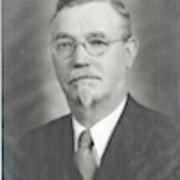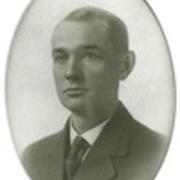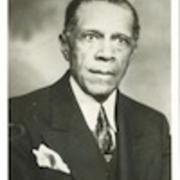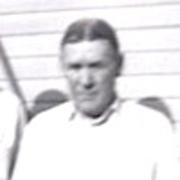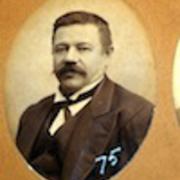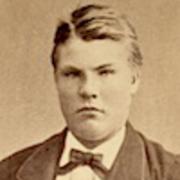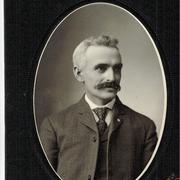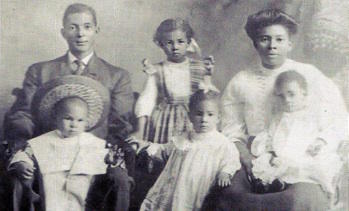Her grandfather would pluck the mandolin, blow his harmonica and recite poetry in the evening when his grueling day job was done. If the children were lucky, he’d try dancing.
“Grampa would sit and cross one leg over the other and we kids, one by one, would climb up on his top foot,” 87-year-old Janet Bullard Watson recalled from Los Angeles. “He would hold our handsand lift and bounce us up and down in the air like a seesaw. Once in a while, he would pretend to do a soft shoe and would do an awkward shuffle that would throw us kids into peals of laughter.”
Luckily for Casiville Bullard, his handiwork as a renowned stonemason and bricklayer didn’t rely on his feet. The son of a slave, Bullard had a hand in building some of St. Paul’s most enduring buildings in the early 20th century.
That list includes the recently renovated Minnesota State Capitol, the Cathedral of St. Paul, the Highland Water Tower and the governor’s residence on Summit Avenue. Visit the architecture surrounding downtown St. Paul’s Rice Park for more. The Landmark Center, St. Paul Hotel, George Latimer Central Library and City Hall-Ramsey County Courthouse were all products of Bullard’s toil.
He crossed the river to help construct the Foshay Tower in Minneapolis in the late 1920s. And his own brick home at 1282 Folsom St., four blocks east of St. Paul’s Lake Como, was added to the National Register of Historic Places some 20 years ago. He built that home at night in 1910, after work, while his wife held a kerosene lamp.
While some people called Casiville “Charlie” and family members used “Pa,” “Dad” and “Grampa,” the oldest survivor among his 34 grandchildren remembers how most people referred to him.
“Everyone else, including friends, in-laws, acquaintances and distant relatives always called him ‘Mr. Bullard,’ ” Watson said. “He was a quiet, graceful, slow but deliberate, gentle man. He didn’t talk much, but when he did, everyone listened.”
Bullard was born on Feb. 24, 1873, in Memphis, the oldest of seven children. “Dad’s father was a slave, but he was reluctant to talk about it,” Bullard’s late daughter, Arlee Blakey, said in a 1995 interview.
Helping his parents in the cotton fields, Bullard made it only as far as third grade. But his math skills soared. His daughter said as an adult he could look at a blueprint of a chimney and figure the necessary quantity of bricks and mortar “to the penny.”
Bullard fled the lynchings and Jim Crow segregation of Tennessee at the end of the 1800s — shuttling back and forth between Memphis and St. Paul, chasing construction work. He brought north with him the skills of masonry, stonecutting, brickmaking and carpentry.
“They liked that he was versatile,” his daughter said.
The bricklayers’ union was one place his skin color didn’t matter. Bullard was a member of the Bricklayers Local No. 1. He likely joined in Tennessee and packed a traveling card to gain entry in the St. Paul union. That was critical because most major projects were union jobs in the early 1900s.
Bullard was part of a tenfold increase in the number of black unionized workers nationally between 1890 an 1910. But those roughly 30,000 tradesmen accounted for less than 1 percent of African-American laborers.
As a skilled artisan, Bullard set the trend in other ways. Seven of eight African-Americans were servants or farmworkers in 1890, the first year occupations were recorded in census logs. And Bullard’s move north before 1900 put him ahead of the crest of the migration wave of 1.5 million African-Americans to northern cities between 1916-1930. When he built his home in 1910, Minnesota’s black population was about 7,000 — 0.3 of the state’s total — with nearly half that group living in St. Paul.
When he wasn’t working his trowel, Bullard was building a large family. He and his wife, Addie, had 10 children after moving to St. Paul permanently in 1902. Addie died during the 1918 flu pandemic.
Bullard, a widower at 45, “fought tooth and nail” to keep his kids together and out of an orphanage, his daughter said. Nearly a decade after losing his first wife, Bullard remarried in 1927. Fannie Russell, whom he knew from Memphis, died 10 years later. Bullard outlived his first wife by 41 years and his second wife by nearly 22 years. He died at 86 in 1959 and was buried at the Elmhurst Cemetery on St. Paul’s North End.
Of all his buildings, Bullard’s brick foursquare house at 1282 Folsom St. might reflect what his granddaughter described as his “quiet, proud” demeanor. A century after he first arrived in St. Paul, that house landed on the National Register of Historic Places.
“Both his house and his life are testament to the accomplishments and perseverance of an African-American craftsman in early twentieth-century St. Paul,” historian Laura Weber wrote in her in-depth look at Bullard’s work. That story, from the 2004 Minnesota History magazine, can be found at: tinyurl.com/MrBullard.
Curt Brown’s tales about Minnesota’s history appear each Sunday. Readers can send him ideas at mnhistory@startribune.com. A collection of his columns is available as the e-book “Frozen in History” at startribune.com/ebooks.
Used with permission of the author. Article can be found at: http://www.startribune.com/son-of-a-slave-helped-build-st-paul/412050083/
